Is Content Inclusivity a Google Search Ranking Factor?

Human society is one formed of tribes. While you might not think about it anymore, with global interconnectivity, communications, and the internet acting as equalizers in the communication space, there are still tribal divisions everywhere. These subdivisions and in-groups are everywhere, from nationality and state-level pride-and-divides, to employee cohorts, to school alumni, and yes, divisions along racial, sexual, and other lines.
Humans are humans, but we've always felt the need to form groups of like-minded individuals to be comfortable with. It's a struggle to contend with when those like-minded groups turn sour or when the shared opinions are oppressive in nature.
Inclusivity is a huge issue in the modern day. How do you make people feel welcome without excluding other people? As a business owner and blogger, you want to expose your content to the biggest audience possible, get as many people engaging with it as possible, and avoid offending people as much as possible. Yet, at the same time, you can never be truly "neutral" because neutrality is inherently supportive of the status quo, and many people currently suffering find the status quo itself oppressive.
In general, there are three audiences you need to please with your content.
- The customers you already have.
- The customers you want to attract.
- Google.
Customers are a fickle group with whims that change with the winds of viral memes. Google is more stable, and indeed, pleasing Google is often the first step in even reaching your audiences. So, what is Google's stance on inclusivity, and is it a search ranking factor?
 30 Second Summary
30 Second Summary
You'll find tribal divisions everywhere in human society, from nationality to employee groups to racial lines. While you want to make people feel welcome, true neutrality often supports existing systems that some find oppressive. You need to please three main audiences: current customers, potential customers and Google. Your content needs to be both inclusive in language and accessible in presentation. You should use gender-neutral terms, avoid harmful phrases and make your site work for everyone. Google rewards this with user behavior metrics and accessibility guidelines - plus, it's becoming a legal requirement in many places.
How is Inclusive Content Defined?
Before we look into whether or not inclusivity is a search ranking factor, it's worth being more specific about what inclusivity means in the first place.
Inclusivity is, in many ways, simply the opposite of exclusivity. Not "Exclusive" in the VIP, limited edition kind of sense, but in the original sense of excluding people.
"Inclusivity is defined as "The fact or policy of not excluding members or participants on the grounds of gender, race, class, sexuality, disability, etc."." - OnCrawl.
It's about equality, equitability (which is different!), and accessibility.
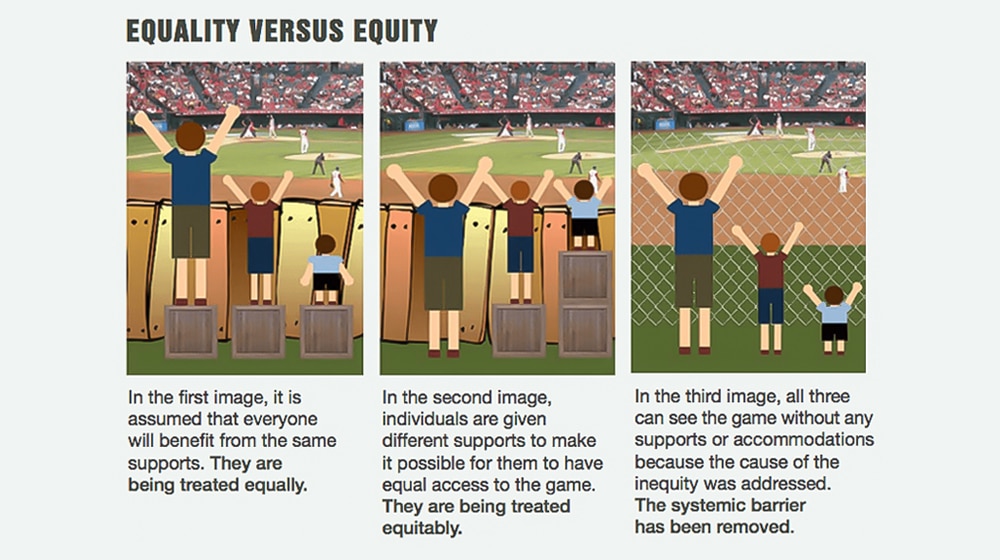
Inclusivity can present itself in two different ways. The first is through the content itself, like the use of language, the use of stereotypes, and even the pronouns you use when writing.
For example:
- Using gender-neutral language, like "they" instead of "he" as the default.
- Avoiding using slurs and slur-adjacent terms.
- Avoiding using turns of phrase with derogatory origins (Business Insider has a quick rundown on some of these.)
- Avoiding any sort of language that can be viewed as derogatory (you may notice I've been phasing out terms like "blacklist" in favor of "denylist" as a simple example.)
All of this is a constantly shifting landscape of changing social norms and standards. Words and phrases that have been in common use up until a few years ago are not deemed as harmful, to varying degrees. Moreover, activists of varying types disagree on what and how far the use of language should be pushed. Some advocate reclaiming words and phrases for their communities. Some acknowledge the treadmill of harm, where one harmful word is replaced by another that gradually adopts the same meaning until it, too, needs to be phased out.
The second form inclusivity takes is in accessibility. You can write the most inclusive content in the world, but if you embed it in an image, someone relying on a screen reader won't be able to partake, excluding them from it.
Accessibility is a huge and growing concern with modern web design, and I've even talked about it on this blog quite a bit:
- WordPress ADA Compliance
- Legible and Accessible Font Choices
- General User Experience Tips
- Creating Audio Versions of Your Content
Both the content and the presentation of your content are important parts of inclusivity, but are either of them search ranking factors?
Is Inclusive Writing a Search Ranking Factor?
The answer here is both yes and no.
As far as I know, there's no single line in Google's policies that says "inclusive content will rank better than exclusionary content." Indeed, plenty of extremely nasty, bigoted content is published every day and ranks well to the audiences it's trying to reach.
Google has, however, taken a few stances that imply they put at least a little attention into it. For one thing, John Mueller, one of their main public faces, said this:
"If you write anything for SEO […], please watch out for inclusive language. It doesn't take much work, and you might not get it right all the time, but taking steps to get better matters too."
Google has, over time, changed their algorithms from keyword-and-link analysis to a lot of natural language processing. There are a lot of indications that they aren't getting everything right at the moment (as anyone who has tried to look up meaningful information in the last few years can attest), but that natural language processing does more than just look at keywords and key phrases.
On a more implicit level, inclusive writing, by definition, avoids doing harm to people. When someone reads words, phrases, statements, metaphors, or even slurs, they're likely to leave the site because they don't want to consume or support that kind of content. This increases your bounce rates, decreases time on site, and has all sorts of negative implications for your SEO. Sure, you might cater to an audience that is fine with or supports that language, but you lose the audience that rejects it. Often, the audience you lose is larger and has more far-reaching implications.
Google doesn't look at your content and say, "Oh, they used this 1800s metaphor that has racist origins," and drop your search ranking. But they do look at overall trends and patterns of user behavior, correlate that to use of language across a broad spectrum of sites and content, and adjust overall algorithms and individual rankings accordingly.
One of the tricky parts of using inclusive language in your writing is that there's no single checklist or template to follow. It's about sensitivity, awareness, and a general sense of working for the betterment of your audience and everyone else. It goes beyond avoiding certain terms or posting a diversity and inclusion statement; it's an ethos.
We create blog content that converts - not just for ourselves, but for our clients, too.
We pick blog topics like hedge funds pick stocks. Then, we create articles that are 10x better to earn the top spot.
Content marketing has two ingredients - content and marketing. We've earned our black belts in both.
That makes it difficult to audit your content to look for "violations," and it makes it challenging to adopt and learn new habits and new terminology if you've used certain words, phrases, or frameworks in the past. No one is perfect! Even the most embedded activists can make mistakes, especially when it comes to areas they aren't personally familiar with.
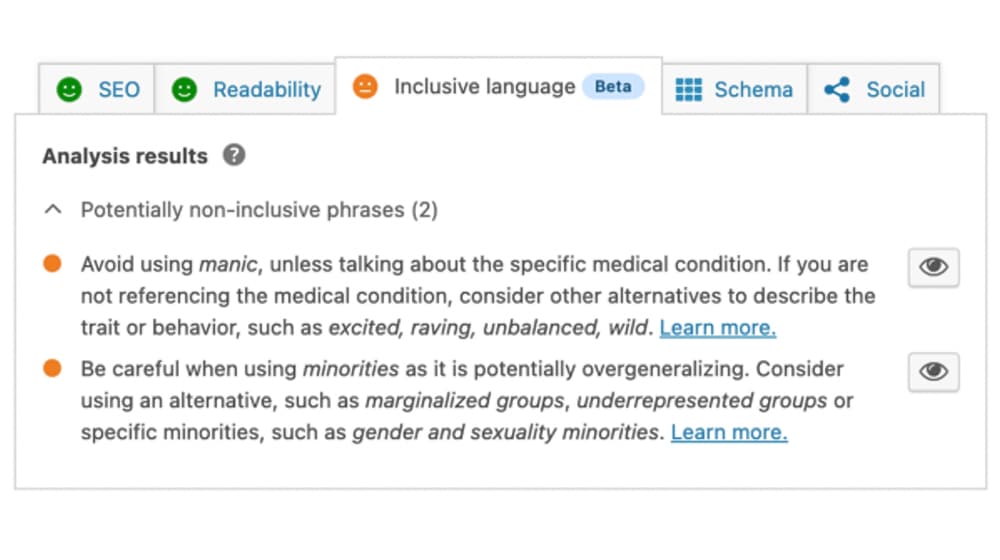
Sometimes, tools can help. Yoast, for example, has a language analyzer that can point out some issues. Grammarly has settings for inclusivity. Nothing is perfect, but tools, an editor with sensitivity reading experience, and a willingness to read and learn on the subject can all help.
Is Site Accessibility a Search Ranking Factor?
Yes, and it may soon be a legal requirement as well. Or, rather, it already is a legal requirement, but enforcement may ramp up in the coming years.
Google has a ton of accessibility guidelines throughout their SEO rules. Things like:
- Making sure clickable elements aren't too close together.
- Making sure text colors stand out from background elements with enough contrast.
- Making sure font sizes are large enough, and fonts are legible.
- Making sure content isn't hidden or obscured by other elements.
- Making sure images have proper alt and description text (for screen readers as well as for indexation purposes.)
- Making sure a website is usable on many different devices of different types.
- Providing transcripts for video and audio content and captions on videos.
- Providing the option for audio versions of content.
Remember, too, that accessibility isn't just about catering to people with disabilities. There are many kinds of temporary impairments brought on by circumstances and events that can make accessibility important. For example, if you've ever tried to look up information and only found videos, but you can't watch them because you're in a noisy place or a place where you can't turn on your volume, you're temporarily impaired from accessing that content, but a transcript or captions could solve the problem.
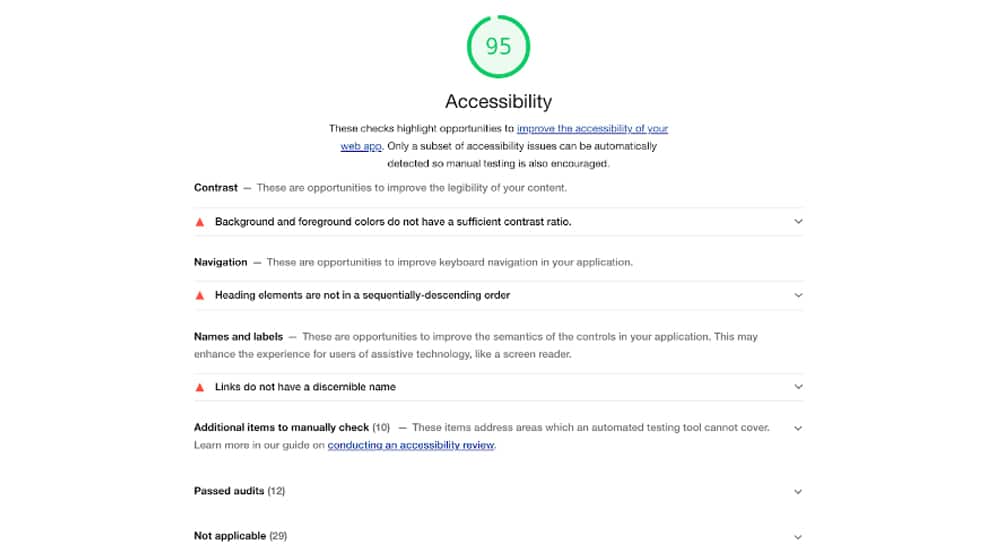
All of these, and many more, are search ranking factors. They aren't huge factors – content subject and quality are the most important onsite factors, and link building can offset significant problems – but they're still very important.
There's also the ongoing push to make accessibility a legal requirement. Recently, the United States government put out a statement clarifying that the Americans with Disabilities Act, or ADA, applies to websites for businesses just as much as it applies to physical businesses. Just like a physical storefront should have doors that can be opened with a button and ramps up sidewalks, so too does a website need various accessibility aids.
The USA isn't the only place with similar regulations. Europe has the European Accessibility Act, and the U.K. has the U.K. Equality Act.
Of course, the government isn't going to go around checking every single website hosted on an American server to make sure it complies. But, this statement gives legal weight to the requirements, so a sufficiently motivated individual or organization could sue a business or brand website for not complying with ADA guidelines. There have been several such lawsuits already against entities like Beyonce, Domino's, and Nike.
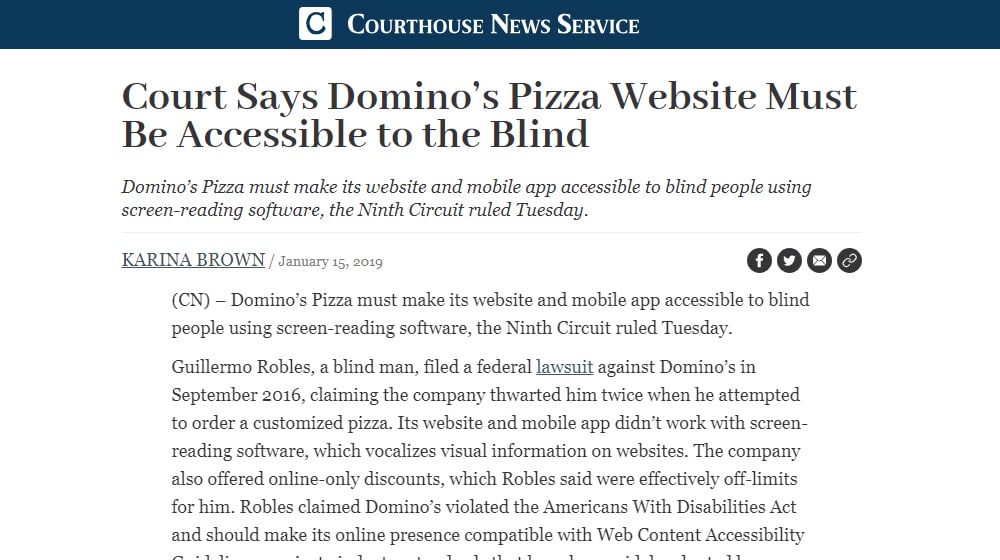
Accessibility is part of inclusivity and is very much a search ranking factor.
Tips for Making Your Site and Content More Inclusive
The biggest tip for inclusivity I can give you is to go all-in on accessibility. Structural exclusion can be immense, and even some common "best practices" fall into exclusionary categories. But, the focus of this post was meant to be on content inclusivity. So, what can you do to make your content more inclusive?
Be prepared to do your reading. There are a lot of resources out there for pushing towards more inclusive writing. Here's a quick one-page primer from the AP Stylebook. Here's some information from Google. These kinds of resources are just scratching the surface; there's a very deep rabbit hole you can go down.
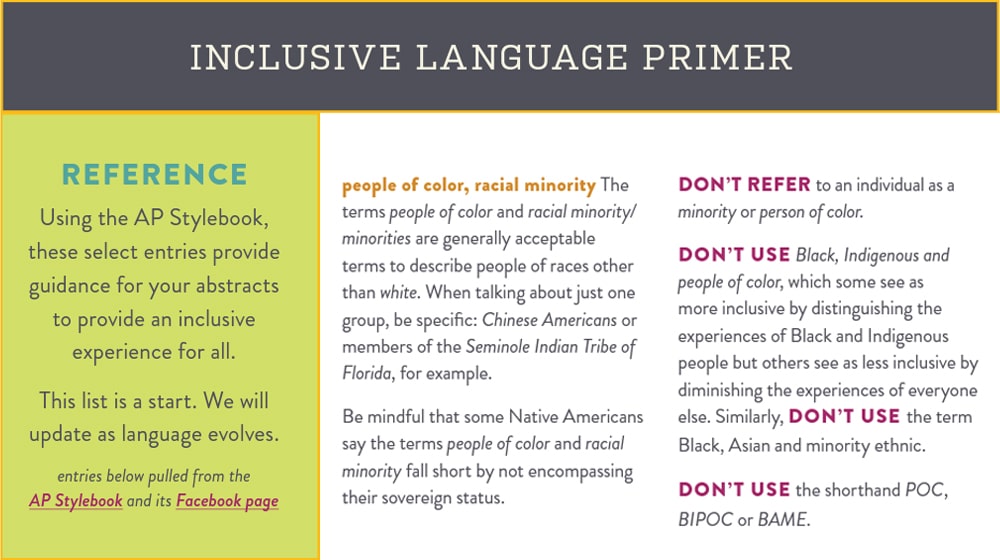
A corollary to this is: don't beat yourself up over a mistake and don't try to force every word to be perfect. You won't get it because there's no state of perfection. The guidelines, perceptions, language reclamations, and changing standards are evolving on a continual basis. If you make a mistake, fix it, acknowledge it, and adjust your language accordingly.
Examine your biases. Everyone has internal biases. Consider your circumstances, your biases, and your assumptions, and question them. A core part of producing inclusive content is having an inclusive mindset, and that means questioning yourself.
A common area where this crops up is in the kinds of examples you use throughout posts. Do you always tend to build out scenarios with male-named business owners? Do you never use names outside of your general worldview? Even small details can be adjusted to be more inclusive, as long as you avoid harmful stereotypes in doing so.
Don't do it alone. Whether you use tools to help spot-check your content, hire a full-on sensitivity reader, or just make them a part of your editorial process, remember that you don't have to try to do everything yourself. Look for writers who have an awareness of inclusivity, look for editors who can verify and validate it, and build an inclusive team to handle it.
For further information, there are plenty of great resources out there. Check out:
- 9 Ways to Design Inclusive Content from Moz
- How to create inclusive content that welcomes a wider audience from Webflow
- 11 ways to make content more accessible and inclusive from TextHelp
As well as some of the other links I've posted above, like Google's resources. There are a lot of people striving for the betterment of language and content across the board.



 30 Second Summary
30 Second Summary


October 23, 2024
How do you keep things welcoming while still being true to your brand? I've had a pretty hard time with that sometimes!
November 06, 2024
Hey Debera!
Balancing a welcoming style with keeping your brand authentic can be really tricky sometimes! I think having clear messages that celebrate being inclusive can help a lot. It's important to be consistent. Have you thought about how your branding shows what you care about?
Please let me know if you need any more ideas! 😊